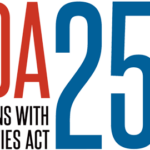The S-Chip Debate & Why Doctors Should Support Senator Kay Bailey Hutchinson
By Sherri R. Katz and Robert S. Bennett
 The S-CHIP (State Children’s Health Insurance Program) has been on the front burner in the news for months, and now has suffered a presidential veto. Initially, S-CHIP was created in 1997 as a bipartisan effort to provide insurance coverage for children living in families with too much income to qualify for Medicaid by not enough to afford private insurance. An estimated 91% of children who are insured by S-CHIP come from families with incomes below 200% of the federal poverty level, or $41,300 for a family of four in 2007(1). Before the enactment of S-CHIP, only eleven states covered children in families of 185% of the poverty level or higher. By 2006, forty-two (42) states covered children with family incomes of 200% of the poverty level, including seven states in which the cost of living is particularly high, which set income thresholds for S-CHIP eligibility at 300%.(2)
The S-CHIP (State Children’s Health Insurance Program) has been on the front burner in the news for months, and now has suffered a presidential veto. Initially, S-CHIP was created in 1997 as a bipartisan effort to provide insurance coverage for children living in families with too much income to qualify for Medicaid by not enough to afford private insurance. An estimated 91% of children who are insured by S-CHIP come from families with incomes below 200% of the federal poverty level, or $41,300 for a family of four in 2007(1). Before the enactment of S-CHIP, only eleven states covered children in families of 185% of the poverty level or higher. By 2006, forty-two (42) states covered children with family incomes of 200% of the poverty level, including seven states in which the cost of living is particularly high, which set income thresholds for S-CHIP eligibility at 300%.(2)
The original bill’s legal mandate expired September 30, 2007. Reauthorization of S-CHIP was attempted, although the most recent bill was vetoed by President Bush on October 3, 2007. That bill was a product of bipartisan negotiations, which included Charles Grassley, R-Iowa and Sen. Orrin Hatch, R-Utah. The original S-CHIP program covered approximately 6.6 million children nationwide.
 In the most recent bill, strongly supported by our very own Senator Kay Bailey Hutchinson, R-Texas, Congress voted to appropriate $60 billion for S-CHIP over the next five years, which would allow the current regulations to stay in place and permit an additional four (4) million children nationwide to enroll. The appropriation would be funded by higher taxes on tobacco products by increasing the federal excise tax on cigarettes to $1.00 per pact, from the current $0.39 per pack.
In the most recent bill, strongly supported by our very own Senator Kay Bailey Hutchinson, R-Texas, Congress voted to appropriate $60 billion for S-CHIP over the next five years, which would allow the current regulations to stay in place and permit an additional four (4) million children nationwide to enroll. The appropriation would be funded by higher taxes on tobacco products by increasing the federal excise tax on cigarettes to $1.00 per pact, from the current $0.39 per pack.
Opposing the bill is U.S. Senator John Cornyn, R-Texas. He supports President Bush’s veto of the bill. Senator Charles E. Grassley, R-Iowa, helped write the bill, and has been quoted as saying “This bill is not socialized medicine.”
After vetoing the S-CHIP reauthorization, President Bush released a letter to Congress through the Office of the Press Secretary. In that letter, President Bush states that he is vetoing the bill “because this legislation would move health care in this country in the wrong direction.” President Bush ends his letter by stating “our goal should be to move children who have no health insurance to private coverage, not to move children who already have private health insurance to government coverage(3).”
President Bush and his allies have declined to support the measure, asserting that the reauthorization of S-CHIP at a substantially higher level of spending would “crowd out” private insurance in favor of public coverage and lead down a path to socialized medicine. However, according to America’s Health Insurance Plans, as reported in the New England Journal of Medicine, more than 70% of children whose coverage is through S-CHIP are part of private plans. President Bush’s 2008 budget proposed the addition of only $4.8 billion over the next five years, an amount that would fall well short of the monies needed to maintain the existing S-CHIP caseloads(4).
Given all the media attention on S-CHIP and children’s healthcare, from a health care provider’s perspective, it appears that the overriding question we should be asking is “how bad is children’s healthcare in the United States?”
A recent New England Journal of Medicine article published October 11, 2007(5), says that the state of children’s healthcare in this country is “far from optimal.” This comment comes as a result of conducting a study of medical records from 1,536 children who were randomly selected from twelve (12) metropolitan areas(6). On average, according to the data in the medical records, children in the study received 46.5% of the indicated care(7).
Because the health care of this country’s children is paramount, and amidst the political battles over ideologies and the S-CHIP program, several groups have come out in support of the bill. In addition, because the House democrats approved a more expansive version of the Senate bill by repealing an impending reduction in Medicare payments to physicians, the American Medical Association (AMA) and the AARP have come out in support of the bill. Other organizations that support the bipartisan S-CHIP expansion include Americans United for Change (AUC), MoveOn.org, Service Employees International Union (which claims over one million hospital workers as members), and the American Cancer Society’s Cancer Action Network. Most doctors would like to see that their patients had the insurance to pay for medical services.
President Bush vetoed the bipartisan S-CHIP bill on October 3, 2007. Deputy Press secretary Tony Fratto quoted President Bush as saying he is “willing to work with members of both parties from both houses” on the issue. However, it appears that the GOP will have enough votes to sustain the veto of the program on the scheduled Thursday, October 18, 2007 vote. The bill was originally passed 265 to 159 in the House. Supporters of the bill need 290 yes votes to enact the bill over President Bush’s veto, if all 435 House members vote on Thursday.
Democrats and Republican supporters of the bill, including Senator Kay Bailey Hutchison hope to gather enough support to override that presidential veto. House Speaker Nancy Pelosi, D-Calif., has said about the vote to override the veto: “We’ll try very hard to override it. But one thing’s for sure: We won’t rest until those 10 million children have health care.”
Senator Hutchison has said she “of course” will vote to override President Bush’s veto of the children’s insurance program expansion that she has supported. Senator Hutchison was quoted in the Houston Chronicle as saying “I will, of course, vote to override, because I think that from my standpoint, I did the right thing”, adding that the S-CHIP reauthorization included proper limits, protection for Texas’ funding, and a way to reach children who still don’t have healthcare.
Ernest Istook, a former U.S. Congressman from Oklahoma, now a distinguished fellow at the Heritage Foundation, hails President Bush and his allies as heroes, not villains, in the ongoing S-CHIP saga. “They know that bigger SCHIP, like all bigger government, means the next generation will inherit the debt to pay for it.”(8)
But U.S. Senator Edward M. Kennedy, D-Mass., has an entirely different perspective. “This is all a matter of priorities: the cost of Iraq, $333 million a day; the cost of SCHIP, $19 million a day.”
In Texas, even if Congress cannot reach a compromise or if the presidential veto is not overridden, state officials have said that the state is unlikely to face cutbacks in its S-CHIP program. According to a spokeswoman for Texas Health and Human Services Commission, the state has sufficient funding from existing federal grants to continue the program for at least a year.
The struggle over the reauthorization of S-CHIP reflects the recurring national debate of the role that government should play in providing health coverage to all Americans, not just children. According to the New England Journal of Medicine(9), the growth of public healthcare has far outstripped private spending since 1965, because, in the absence of affordable private insurance, the federal government has expanded coverage of populations considered appropriate recipients of public support. This trend will only accelerate with the coming retirement of baby boomers.
But the question still remains: How bad IS children’s healthcare in the United States and what are we going to do about it? Senator Kay Bailey Hutchison and The American Medical Association appear to believe that supporting the reauthorization of S-CHIP is a good place to start. If, as a physician, you support Senator Hutchison’s position for children’s healthcare, please contact Senator John Cornyn at: www.cornyn.senate.gov or 517 Hart Senate Office Building, Washington D.C., 20510; 202-224-2934 and request he support overriding the S-CHIP presidential veto. For additional information about matters of interest to physicians go to www.bennettlawfirm.typepad.com or www.bennettlawfirmmed.com.
End Notes
1. The Battle over SCHIP by John K. Iglehart, New England Journal of Medicine (NEJM), Volume 357:957-960, September 6, 2007.
2. Id.
3.President Bush’s Letter to Congress, from The White House, Office of the Press Secretary, for Immediate Release October 3, 2007.
4. The Battle over SCHIP by John K. Iglehart, New England Journal of Medicine (NEJM), Volume 357:957-960, September 6, 2007.
5. The Quality of Ambulatory Care Delivered to Children in the United States by Rita Mangione-Smith, M.D., M.P.H,; Alison H. DeCristofaro, M.P.H.; Claude M. Setodji, Ph.D.; Joan Keesey, B.A.; David J. Klein, M.S.; John L. Adams, Ph.D.; Mark A. Schuster, M.D., Ph.D.; and Elizabeth A. McGlynn; Volume 357:1515-1523, October 11, 2007.
6. The NEJM study covered all children, even those covered by health insurance and those not eligible for SCHIP.
7. This average is from data indicating children received 67.6% of the indicated care for acute medical problems; data indicating children received 53.4% of the indicated care for chronic medical conditions; and from data indicating children received 40.7% for indicated preventive care.
8. “Left Loves S-CHIP”, by Ernest Istook, Nation Review Online (NRO), October 15, 2007.
9. The Battle over SCHIP by John K. Iglehart, New England Journal of Medicine (NEJM), Volume 357:957-960, September 6, 2007.





